Do we know how to accept our children’s emotions ? And what about ours? There is a lot of talking today about emotion .. And that’s good. Beyond knowing how to identify them, accepting your children’s emotions is sometimes easier said than done .. It is a learning process too, and here I share my tips with you !
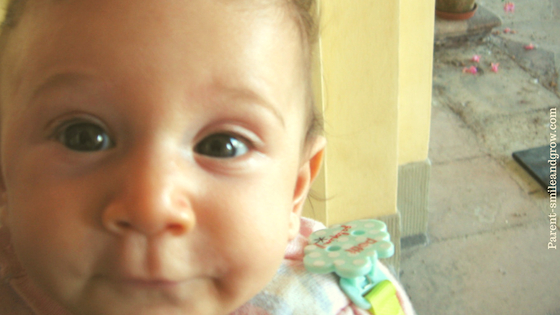
Table of Contents
What do you know about emotional education?
The first time I heard about “emotional education” was reading one of the articles of this online course, in which it was suggested to “put a word” on what the baby is going through.
Does she cry because she’s hungry? “Yes, my love, I know you’re hungry, I know it’s hard to wait (we frown) now your dinner’s coming” (our face opens with a smile).
Baby becomes extremely irritable because she’s tired? “Of course honey, you’re very tired, I see it, it’s hard to stay calm when you’re exhausted and want to sleep (here, the expression of an empathetic understanding is easy, right?) Now we’re going to sleep.”
And by mimicking these feelings with our expressions at the same time as we speak, which we usually do automatically and unconsciously, our baby learns to associate the sound of the word with the emotion and to how positive the sensation was. (For more examples and a good guide on the subject, I recommend this book from Lynne Murray)
Well, I find that afterwards, things get a little more complicated. Because as long as one has to interpret the crying of a baby, despite the lack of language, the options are not infinite: angry because of a dirty diaper/ hungry / thirsty ; sad because she wants to be hugged; happy when her mother picks her up and interacts with her; marveled when she discovers something new, etc.
When accepting your children’s emotions is hard …
Later, however, as we also saw when we talked about needs and desires, it’s not always immediate :
a) interpreting sad faces, the anger, the sudden crying … as many possible causes and emotional facets, new needs that emerge. Physiological factors also come into play (such as nutrition, fatigue, not drinking enough water, etc.), but also the confrontation with their peers at school, the need to exercise some control..
b) understanding the needs behind our reactions, when we are confronted with one of these sudden and sometimes seemingly illogical behaviors.
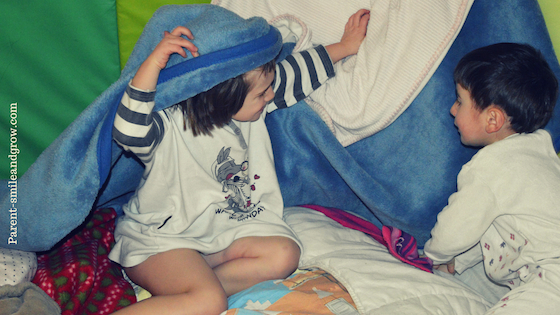
Many idyllic moments can suddenly turn into conflicts..!
My thinking today starts from a distance … but at first it was not very structured.
… and leads to think about your own emotions
The first bell rang when I realized that my reactions to the manifestation of my daughter’s emotions were sometimes excessive .
To be honest, I had never really thought about my own reactions before. Of course, we touched the subject after arguments or misunderstandings with my husband, but usually we resolved the issue with a conversation between “rational adults”.
I think that my very first serious difficulty was accepting my daughter’s different sleep rhythms.
Having to give in to the fact that it was not enough to say: “It’s late, you have to rest!” read a story, give her a kiss and turn off the light.
Why did it literally make me crazy that my daughter did not want to sleep? Frustration for not being able to enjoy these two adult hours and do what I planned? Feeling that my daughter controlled every aspect of my life? That things were not exactly as I imagined them before her birth?
How do you interpret your emotions ?
I did not understand it at the time, but today, I think that my daughter had perceived my red bubble of anger and frustration and she’d probably also found the button she needed to press to see it light up; and thus exercised some form of control over me.
Then came the no phase. When to affirm her identity, distinct from that of the parent, your little angel begins to oppose at each occasion, observing with a big smile your reaction (I think I have developed a nervous tic to the eye).
So, we inquire why, we ask questions to know what to do; we finally understand that this is a very important phase of her development (and then, at that moment, “no” is the only word that she has learned to say).
But when I came home exhausted after a day at work, relieved to be able to spend time with my baby and..
“We’re going home honey” and she would look at me “NO!”
“Let’s wash our hands « NO! »
“Shall we eat something?” “NO!
“Let’s go read a story together? “NO!” .. How do you manage ? Understand my dismay?
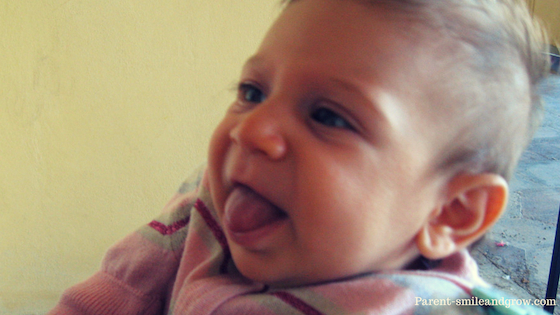
See, the key thing that triggered my self-analysis is that I’m usually a person who never gets angry. In fact, I thought I had a problem with expressing my anger.
Perhaps it was also a lack of emotional education, of not being used to asking what I feel and knowing how to associate it with a latent need. And then, this wonderful creature arrives, and it only takes one of her NO to unleash me! Why?
What’s an emotion ?
And now you can see the wheels spinning in my head while I try to solve my existential puzzles. Maybe you ask yourself the same questions..
And so, let’s start from there: what’s an emotion ?
Emotions are guides that, since our childhood, allow us to analyze and make sense of what is happening to us. We remember events according to what they made us feel and we try to reproduce the ones that are positive.
But emotions are all fundamental: we can’t feel good if we have never felt bad. No emotion should be avoided, but it must be interpreted correctly to guide our behavior.
I resume an enlightening chapter of Isabelle Filliozat (from her book “Il me cherche!” – not yet translated into English).
Primary Emotions (or the low road) : they are physiological and adaptive responses of our organism. The amygdala releases a flood of hormones to prepare the body to react BEFORE informing the neocortex, which then decides either to calm things down or to confirm the appropriate reaction. (I described this process also in this post).
Feelings or Secondary Emotional Reactions : they come from our thoughts, our interpretations – and so they can also be based on incorrect assumptions.
Expressing an emotion allow to let it free. Instead, the expression of a secondary emotional reaction only reinforces the first emotion … in a kind of vicious circle.
The difference is subtle … and requires us to learn how to distinguish between the two.
Tips to accepting your children’s emotions #1: Time
I like this definition of Thomas d’Ansembourg * : “The mastery of our emotions is not denial, nor repression, nor control, it’s the ability to make a wise use. The mastery of our feelings and emotions therefore requires a thorough knowledge that comes with a regular attendance, a familiarity to them”
Translated, we need time.. a time for us, in which we remain alone with ourselves, we consciously feel what is happening inside us. Because “we have learned to do and to run, not to be, to be with our feelings”*.
Still the other day, despite all the months of reflections around my emotions, parenting, etc.,. when sadness overcame me because of negative news that I did not expect, I tried to chase it away.
I felt guilty for being sad, when it was nothing major. And then I started doing, running, organizing, looking for information, going on the Internet .. for two days I continued like that, until I understood, and I allowed myself to cry.
Maybe you have different defense mechanisms .. The bottom line is not forgetting to listen to ourselves.
Tips to accepting your children’s emotions #2 : the risks
What happens if we try to manage the emotions of our children without first learning to manage ours?
Some plausible hypotheses :
-
exaggerating. “Honey, what’s that look, are you okay? Are you sad because Mom left you a moment to prepare dinner?” “No Mom, it’s for the Winx. Bloom has less magical powers. I think she should have more! “
-
want to find a solution at all costs . “What happened? Are you sad, or are you angry? Come on, don’t think about it, we’ll go to the playground and have some ice cream shall we?” We reproduce the model : escape from the emotion and replace it with actions.
-
do not accept, and therefore perhaps punish, negative emotions , such as anger, when they cry for a no for example.
Tips to accepting your children’s emotions #3 : special Anger
Anger is for me the most difficult emotion to accept. I always want to find all the reasons why NOT to be angry and forget everything. And plus, it’s so exhausting to offer our proximity to a child who’s angry with us and relieving his helplessness against us..
“I understand you’re angry, I know you wanted to play with cars, “and I probably should stop there, calm but close, but I still feel compelled to justify myself.” But you see, we have to go to the doctor, we’re late.” And the explosion of anger reaches its peak.

It’s amazing, I know: I just can’t silence my instinct of rationalization. When I know very well that it’s not (yet) the moment: we must first accept the emotion. Then, when the neo-cortex will be reconnected to the rest of the brain, we can then give all the rational explanations.
When I am in the wrong hormonal phase for example, and that my irascibility goes up to its peak, if I’m facing a problem and my husband tells me: “But you just need to do like that, look! “My first animal instinct is to scream all my frustration until then poorly repressed.” YOU DO NOT UNDERSTAND! ” Even though he actually just solved my problem.
On the other hand, when it comes to my children and the situation is reversed, I do the same to them. Incredible, isn’t it?
Tips to accepting your children’s emotions #4 : going through the storm
Don’t be sad! Come on, there’s no reason to get angry! These little phrases that we say so often are, after all, the reflection of two common but dangerous beliefs. :
- That the “negative”, unpleasant emotions are to be avoided at all costs
- We feel responsible for the emotions of others, we listen and judge
Yet, to get rid of our negative emotions, we must first live them, going through them.
If I do not treat them like the inhabitants of my house with whom I try to cohabit in good understanding, I risk being inhabited by them*.
And to go through them (always quoting Thomas d’Ansembourg *) we need to :
- Abandon judgments (as “If I’m scared, it means I’m an incapable”)
- Go beyond our beliefs, our prejudices ( “We are all stubborn in our family”; or “A man doesn’t cry”.)
- Move to complementary thinking : “If I’m afraid, I’m not brave” to “I’m afraid and I want to find courage”
- Without locking oneself into the dis-empowering language : “As a parent, you have to be strong, so I have to not be afraid” * (remember when I talked about using the verb to choose instead of must?)
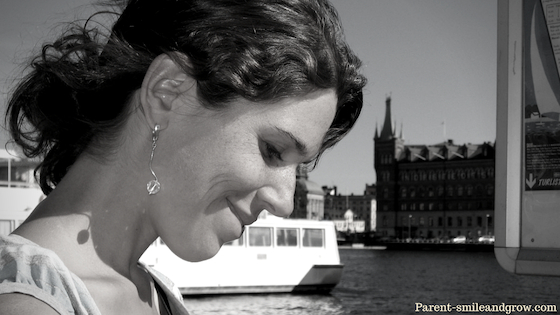
Only if we let our emotions go through us completely, we can accept them. And when we have accepted them, we can also accept those of our loved ones, without feeling threatened or attacked.
Tips to accepting your children’s emotions #5 : suspending judgement
Of course, it hurts us to see our child submerged by his sobs. In some ways, we feel challenged. We suffer for and with him; we confuse our role. Love = make happy (and dependent on us).
If our partner / friend / child / parent, etc. get angry or crying, do we have to comfort him and make him happy again?
We sometimes confuse empathy and responsibility. Forgetting that we are all responsible for ourselves, for the interpretation we give to our emotions, and how we decide to use it in the face of a certain event .
Tips to accepting your children’s emotions #6 : emotional independence
Last night I was unmanageable. I felt that everything was wrong; and when I got home, I had to manage a technical aspect of the blog that made it non-functional without understanding why.
Instead of playing and drawing with the kids as I had planned, or doing something quiet together, I started arguing with the computer, while the kids were trying to get in every way to attract my attention.
In these cases, you will also have noticed, children are very good at picking up our negative vibrations and going out with the weirdest ideas.
Spread all the toilet paper on the floor. Put back in a casual order all the dry laundry, previously folded and ready to be stored .. How do you react in these cases?
In my angry desperation, I tried to make my poor children understand that I had a big problem. Hello empathy!
Is it not an intrinsic frustration amplifier when others look happy when you are an erupting volcano?
Now, rationally, in the calm of the morning, I tell myself that it was foolish to think that my 3-year-old son could understand me, sit quietly in a corner with a game and say: “Don’t worry, poor mom, I’ll just play by myself”.
(But I hope that in a few more years, he’ll be the one solving the HTML problems on my website.)
Towards a happier parenting …
The fact is, I wanted to be the good mother who plays, participates, does things. Cheerful, smiling, respectful of the principles of positive education, she does not threaten but asks, she does not scream the rules but imposes limits..
I didn’t want that hyper-sensitive part of me that wants to scream my fists running away because things are not going as planned.
I try to ignore it until the explosion. Maybe next time, I’ll take five minutes alone to deal with it and listen to that hidden sensitivity. Instead of plugging holes with the hyperactivity of my agitation.
Are you a happy parent? I’m listening, therefore I am
Then I’ll be able to remember, when it happens to my kids, that it’s not a distraction, not even my empathetic understanding that will help them. Just being there. Without letting myself be overwhelmed by their emotion. A rock against which the stormy sea strikes. We can leave the analysis to the dead calm of the morning.
LISTEN. Stay there, hug them and don’t leave them until the emotion has calmed down.

“You know mom, today my friend was very rude to me: he called me poo, he stuck his tongue out at me and he made fun of me saying : “I have a ball and you don’t, ha ha!” “
“And how did you feel when he told you these things?”
“I felt very sad”
“I’m sorry you felt sad … Maybe you can think about it, the next time you want to make fun of someone. You’ll remember how you felt today and you will not want to make the other person sad. “
And we stayed entwined. I did not tell her anything else. (I’d probably said too much already).
“Mom, I feel better now, because you’re here.”
Do you know anyone who could benefit from this little guide ? Share it!
*The quotes are from the French book : “Etre heureux, ce n’est pas nécessairement confortable”, Thomas d’Ansembourg.
This article contains affiliate links to the Amazon.co.uk website. They allow, in case of purchase, to earn a commission between 5 and 10%. All the opinions expressed are mine and for more information, you can refer to our Legal disclosures .
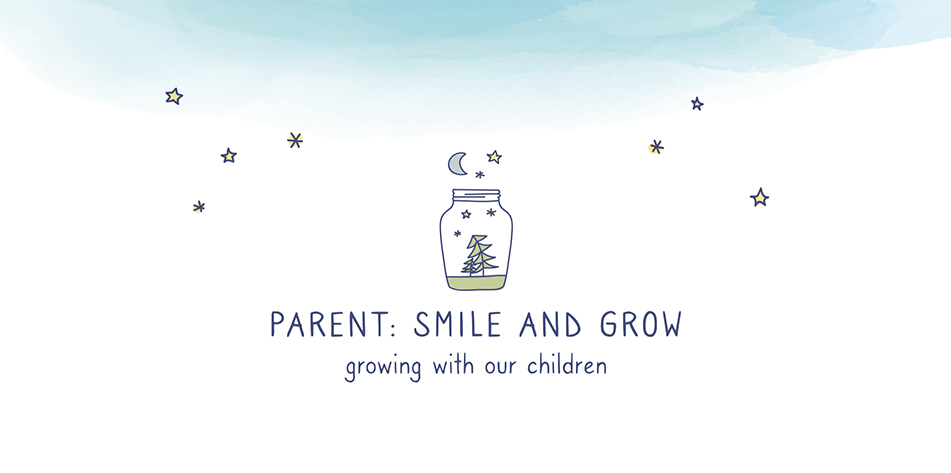
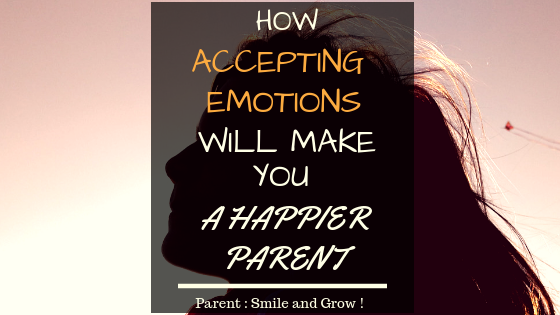
Pingback: 9 Ways You Can Help Your Teen with Depression